|
In This Issue...
- President's Letter
- IBNS at SfN 2017
- Enhancing Neuroscience Education in Puerto Rico
- Meet the IBNS Career Center
- Trending Science
- Announcements
Join us for the IBNS 27th Annual Meeting in the beautiful Boca Raton, Florida, USA at the Boca Raton Resort from June 27-July 2, 2018. As the meeting quickly approaches, we want you to keep in mind that Travel Award Applications are due January 22, 2018. For more information, please visit IBNS 2018 Annual Meeting and feel free to contact the IBNS Central Office with any questions.
IBNS in 2018 - Letter from the President
First of all, I want to wish everyone a very Happy New Year from everyone at IBNS!
After a very eventful 2017, that included a very successful annual meeting in Hiroshima, Japan and a quick change in venue for the 2018 meeting after the devastating Hurricane Maria hit Puerto Rico, we are now looking forward to an exciting 2018 annual meeting that will be held in Boca Raton, Florida. The meeting will be from June 27, 2018 to July 2, 2018. Until then, there are a number of dates to bear in mind, including the travel award applications deadline (January 22), the abstract submission deadline (February 26), the early registration deadline (March 1), the late abstract submission deadline (posters only, March 26), and the final day for late registration (June 1). I encourage everyone to do everything early to save on those precious travel dollars.
As we announced at the Society for Neuroscience conference, including the packed IBNS social, the plenary speakers and symposia for the 2018 meeting have already been chosen through the diligence and hard work of our Program Committee, chaired by Elena Choleris. The exciting program includes plenary talks from Gregory Quirk, Tracy Bale, Jill Becker, and Cheryl Sisk; as well as 28 symposia - more that we have ever had at an IBNS conference.
The next deadline is for travel awards on January 22. For students and postdoctoral fellows, I encourage you to apply, but remember that you need to be a member of IBNS to submit your application. If you are not a member already, remember to allow some time (4-6 business days) for the application process. You will also need to submit an abstract along with your application. For faculty members, please encourage your students to apply for an award to support their travel to the meeting, and as an important step forward in their career development.
I would also like to announce that one of our supporting vendors, Plexon Inc., has generously offered to fund 3 additional travel awards for students from Puerto Rico affected by Hurricane Maria. We very gratefully acknowledge the support of Plexon, and would therefore especially encourage qualified students and postdoctoral fellows from Puerto Rico to apply for travel awards.
Best wishes everyone,
F. Scott Hall, PhD, IBNS President
IBNS at SfN 2017
by Patricia B. de la Tremblaye, Guest Editor
University of Pittsburgh, Pittsburgh, PA, USA
The IBNS Office was in Washington, DC for the November 2017 Society for Neuroscience (SfN) annual meeting. IBNS had over 400 visitors at the booth, and a smashing reception at the Marriott Marquis that welcomed long-standing and new potential members, which were hardworking in the conference at the exhibits, the council meeting and presentations.

For instance, at SfN, Dr. Jodi Pawluski (chair of the IBNS Membership Communications
.jpg) Committee), led a mini-symposium titled "Neuroscience of Maternal Psychopathology," as co-chair with Joseph Lonstein of Michigan State University. This mini-symposium focused on highlighting what we know about the neurobiology of maternal mental illnesses, such as perinatal anxiety and depression. It aimed to increase awareness about the need for understanding the neurobiological mechanisms underlying these disorders to aid in preventing maternal mental illness. After SfN, Dr. Pawluski flew to Guangzhou, China to speak about perinatal depression at the Biostime Institute of Nutrition and Care annual meeting, as part of the H&H groups (http://www.hh.global/). For more reading on the neglected neurobiology of maternal mental illness, see the editorial by J. Pawluski, J. Lonstein and A.S. Fleming in PanEuropean Networks Science and Technology: Magazine as well as a recent review in Trends in Neurosciences Committee), led a mini-symposium titled "Neuroscience of Maternal Psychopathology," as co-chair with Joseph Lonstein of Michigan State University. This mini-symposium focused on highlighting what we know about the neurobiology of maternal mental illnesses, such as perinatal anxiety and depression. It aimed to increase awareness about the need for understanding the neurobiological mechanisms underlying these disorders to aid in preventing maternal mental illness. After SfN, Dr. Pawluski flew to Guangzhou, China to speak about perinatal depression at the Biostime Institute of Nutrition and Care annual meeting, as part of the H&H groups (http://www.hh.global/). For more reading on the neglected neurobiology of maternal mental illness, see the editorial by J. Pawluski, J. Lonstein and A.S. Fleming in PanEuropean Networks Science and Technology: Magazine as well as a recent review in Trends in Neurosciences
http://www.paneuropeannetworkspublications.com/ST22/files/assets/basic-html/page-155.html
http://www.cell.com/trends/neurosciences/fulltext/S0166-2236(16)30177-1.
With the substantial impact that maternal mental illness can have on mother, child and family, Dr Pawluski encourages us to do more to promote maternal mental health and well-being.
SfN 2017 was also a busy week for Dr. Lizzy Manning, a postdoc in the Department of Psychiatry at the University of Pittsburgh, working with Dr. Susanne Ahmari. She attended a fantastic and free pre-SfN satellite meeting titled, The Molecular Cellular Cognition Society (https://webapps1.healthcare.uiowa.edu/MCCS/index.asp). This provided Manning a great opportunity to give the presentation a test run before her Sunday morning poster session, which was "non-stop once people had woken up," she said. There was a great atmosphere around her poster with four other lab members representing "the largest Ahmari lab contingency to date," she added.
After having her symposium accepted, Dr. Manning will be presenting her work at the 2018 IBNS annual meeting. She submitted the symposium with her collaborator, Jess Nithianantharajah, from the Florey Institute in Melbourne, Australia, where she completed her graduate studies. At IBNS 2018, she will also be presenting ongoing work from her project, for which she is now using miniature microscopes to perform in vivo calcium imaging. These miniature microscopes will investigate changes in prefrontal cortex function that contribute to cognitive impairments and compulsive behavior in an Obsessive Compulsive Disorder (OCD) - relevant mouse model. We look forward to her talk in Boca Raton, on south Florida's sparkling coast.
Enhancing Neuroscience in Puerto Rico
by Demetrio Sierra-Mercado, Department of Anatomy and Neurobiology, University of Puerto Rico, Medical Sciences Campus, USA and by Nelson D. Cruz-Bermúdez, Department of Psychology, University of Puerto Rico, Río Piedras Campus, USA
Why neuroscience in Puerto Rico?
Puerto Rico, a non-incorporated territory of the United States, is going through a deep economic recession that undermines its development and social advancement. For instance, Puerto Rico is ranked seventh worldwide in terms of population decline (Kilpatrick, 2015). Between 2004 and 2006, 440,000 Puerto Ricans (over 10% of the population!) migrated to the mainland U.S., which translates into nearly 3,000 U.S. citizens moving out of Puerto Rico each month. In the aftermath of Hurricanes Irma and María, 100,000-200,000 more citizens may soon leave. Clearly, it is vital to implement and nourish educational and social initiatives aimed at retaining young talent to stimulate our economic growth.
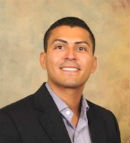 According to the National Institutes of Health (NIH), neuroscience is the fastest growing branch of biomedical sciences (Koroshetz, 2015), including Puerto Rico. More than 500 scientists attended the 2016 Puerto Rico Neuroscience Annual Conference, almost double the attendance from previous years. Literacy in neuroscience and research keeps people motivated to engage in contributing roles in society and creates a culture that values knowledge, eradicates prejudice and fanaticism, and promotes a thirst for social and economic development. Therefore, improving educational offerings in neuroscience could be beneficial to increase biomedical research and enhance the scientific culture of Puerto Ricans. According to the National Institutes of Health (NIH), neuroscience is the fastest growing branch of biomedical sciences (Koroshetz, 2015), including Puerto Rico. More than 500 scientists attended the 2016 Puerto Rico Neuroscience Annual Conference, almost double the attendance from previous years. Literacy in neuroscience and research keeps people motivated to engage in contributing roles in society and creates a culture that values knowledge, eradicates prejudice and fanaticism, and promotes a thirst for social and economic development. Therefore, improving educational offerings in neuroscience could be beneficial to increase biomedical research and enhance the scientific culture of Puerto Ricans.
Unfortunately, only a small fraction of students in the Puerto Rican public educational system has the competitiveness to achieve admittance into biomedical and neuroscience research-oriented programs. Although nearly 70% of high school graduates are from public schools, the majority perform poorly on standardized tests, receive scarce information about admission requirements to professional programs, and display low motivation to continue a path in science after college. With this in mind, we have developed with our close collaborators various initiatives to provide public school students tools and experiences that will help them gain a heightened ability to advance academically and strengthen their motivation to pursue science careers.
What kinds of university-school partnerships have been established?
Even though undergraduate-level research opportunity programs are effective to recruit students into science, technology, engineering, and mathematics (STEM), we still need to develop novel 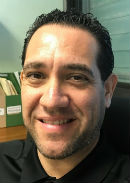 approaches to train teachers in STEM and to provide high-quality, authentic research opportunities for K-12 students, particularly Hispanic/Latinos and other underrepresented minorities. Our research group (Dr. Cruz-Bermúdez, Dr. José L. Agosto-Rivera, et al.) has examined the viability and outcomes of different neuroscience research experiences involving partnerships between public school science teachers, students, and university scientists. For example, we collaboratively designed several research projects for high school students in which they explored how alcohol, nicotine, artificial sweeteners, and other substances affect fruit fly development and behavior. We have assessed the long-term effects of these partnerships and we have found that the initial engagement of science teachers, in an authentic research setup, is an effective strategy to both recruit school students into research as well as establish lasting school-university partnerships. In addition, in the context of the science fair, the implementation of authentic research experiences enables the direct involvement of parents who play a key role on the students' career choice. We also found that participation in a research experience was a decisive factor for high school students to pursue a science-related career in college. We believe that the significant findings of our work might be used in other settings to advance neuroscience education and research, and increase students' interest in STEM. approaches to train teachers in STEM and to provide high-quality, authentic research opportunities for K-12 students, particularly Hispanic/Latinos and other underrepresented minorities. Our research group (Dr. Cruz-Bermúdez, Dr. José L. Agosto-Rivera, et al.) has examined the viability and outcomes of different neuroscience research experiences involving partnerships between public school science teachers, students, and university scientists. For example, we collaboratively designed several research projects for high school students in which they explored how alcohol, nicotine, artificial sweeteners, and other substances affect fruit fly development and behavior. We have assessed the long-term effects of these partnerships and we have found that the initial engagement of science teachers, in an authentic research setup, is an effective strategy to both recruit school students into research as well as establish lasting school-university partnerships. In addition, in the context of the science fair, the implementation of authentic research experiences enables the direct involvement of parents who play a key role on the students' career choice. We also found that participation in a research experience was a decisive factor for high school students to pursue a science-related career in college. We believe that the significant findings of our work might be used in other settings to advance neuroscience education and research, and increase students' interest in STEM.
Who are "NeuroBoricuas?" What is their initiative?
The NeuroBoricuas was founded and organized by Dr. Christian Bravo-Rivera (currently a postdoctoral fellow at Cold Spring Harbor Laboratories) and Dr. Demetrio Sierra-Mercado, Assistant Professor at the University of Puerto Rico School of Medicine. We are a group of neuroscientists and educators committed to revolutionizing the scientific culture of Puerto Rico by incorporating neuroscience research training and inquiry based activities in schools (Sierra-Mercado et al., 2017, Society for Neuroscience Abstracts). We serve our mission through community outreach to the public where we promote neuroscience literacy using diverse learning activities. In parallel, we are designing a neuroscience textbook and course with educators to be implemented in schools. We are also establishing neuroscience laboratories in K-12 schools and training science teachers to manage such labs, using equipment from Backyard Brains (https://backyardbrains.com/). A primary goal is to have these laboratory experiences integrated into the high school curriculum, making it available for students interested in designing their independent research projects in collaboration with local universities. Our growing network of scientists is committed to integrating academic researchers with educators to nurture future neuroscientists early in their academic preparation. One year after its inception, NeuroBoricuas has established collaborations with over 20 high schools and has student representatives in 18 universities all over Puerto Rico. We expect to expand this network to other Latin American countries and underrepresented minorities in the U.S.
What is happening in Puerto Rico after Hurricanes Irma and María?
In September 2017, Puerto Rico was hit by two category 4-5 hurricanes: Irma and María. Both natural events caused severe damage to many public and private university buildings, research facilities, and schools around Puerto Rico. Furthermore, Hurricane María devastated Puerto Rico's electrical power infrastructure, which negatively affected our scientific and educational endeavors. Additional problems with telecommunications and lack of Internet access slowed down our ability to continue with our research partnerships and community outreach efforts. Despite this series of unfortunate events, there was no damage to our drive! On the contrary, we are now motivated more than ever to push through and unite with each other to rebuild Puerto Rico. We take this opportunity to send our deep appreciation to all scientists, organizations, and humanitarian entities in the U.S., and all over the world, that have extended their kind support to continue our scientific initiatives and push science forward in Puerto Rico.
Looking for a new employment opportunity or struggling to find the right candidate? Meet the IBNS Career Center!
One of the biggest challenges for any international scientific society is to provide quality and informative support to its members, whether it is for a new employment opportunity or for finding the right candidate for a new position you opened. The IBNS excels in this area through its online Career Center portal (http://jobs.ibnsconnect.org) through which it provides the right tools for both, job seekers and employers.

The IBNS Career Center portal offers all the standard operational features, such as a thorough search engine by keyword and location, as well as extra services such as a free review of your resume for feedback and a job-posting service for employers. However, what makes the IBNS Career Center stand out in terms of support, is two additional quality features: resources for job seekers & access to a resume bank for employers.
In the Resources section you can have access to a number of articles with valuable tips in resume building, job seeking and communication, from experienced scientists in the field, not only for searching or applying for a position, but also for the interview process. There is also plenty of advice and tips for building your ‘brand’ and your social media presence, which will help you strengthen your image and moving your career to the direction you want.
 In the Resume Bank, potential employers have free access to a large bank of resumes and profiles, which you can customize by introducing filters that apply to your search and create lists of candidates that fulfill your own criteria. In the Resume Bank, potential employers have free access to a large bank of resumes and profiles, which you can customize by introducing filters that apply to your search and create lists of candidates that fulfill your own criteria.
Trending Science
In this column, we share the latest research, interesting scientific articles and news.
The sex of the researcher as a confounding variable in the effects of Ketamine in a mouse model of depression
by Patricia B. de la Tremblaye, Guest Editor
University of Pittsburgh, Pittsburgh, PA, USA
The NMDA-type glutamate receptor (NMDAR) antagonist, Ketamine, has been found to be effective within hours of use in patients with treatment-resistant depression to selective serotonin re-uptake inhibitors (SSRIs), the current standard pharmacotherapy for major depression (Gould et al., 2017). The antidepressant action of Ketamine can persist for many days after acute and chronic administration, although it is typically accompanied by many cognitive, psychotomimetic, and peripheral adverse effects, due to Ketamine's analgestic and dissociative anesthetic properties (Andrade, 2017). The mechanisms of action of Ketamine are thought to be through restoring stress-induced deficits in excitatory synapses, found in the cortico-mesolimbic circuits through modulation of glutamatergic and GABAergic receptor transmission (Zanos et al., 2017). Enhanced Ketamine antidepressant action in chronic stress-induced, immobile behavior in the forced-swim test (FST) has been observed in female mice compared to males; suggesting sex differences in the antidepressant-like effects of Ketamine (Zanos et al., 2016). Interestingly, Ketamine's effects may be influenced by the sex of the researcher performing the experiments. Indeed, a recent article by Sara Reardon, published November 17, 2017 in Nature Neuroscience News, and reproduced in Scientific American on November 20, 2017, titled: "Sex Matters in Experience Party Drug -- in Mice," described finding presented at the 2017 Society for Neuroscience (SfN) meeting in Washington, DC on the modulatory role of the sex of the researcher on the behavioral effects of Ketamine in rodents.
The article recounts how female and male neuroscientists, from the laboratory of Dr. Tom Gould (Department of Psychiatry, University of Maryland, Baltimore), ran identical experiments to test the antidepressant action of Ketamine on FST behavior in stressed mice, and obtained different results. The male experimenter found that Ketamine reduced immobility in the FST compared to vehicles, while the female experimenter found no significant differences in FST behavior between Ketamine- and vehicle- treated mice. The lab replicated these findings by re-running the behavior with three females and four male investigators, and discovered that Ketamine reduced FST despair behavior only when it was administered by male researchers. In addition, the sex-dependent effect was dependent on the odors emitted by the researchers. The mutable effect of Ketamine could be eliminated when mice were placed in an empty fume hood, such that mice injected with Ketamine had longer swim times when a garment worn by a male experimenter was present in the fume hood during administration, as compared to clothing worn by a female experimenter. To confirm these results, the Gould lab tested Ketamine injected stressed mice using other standardized FST protocols and a larger number of experimenters (eight males and eight females), and found the same results. Furthermore, these effects appear to be unique to Ketamine, as the Gould lab performed the same experiments with other antidepressants, and found no modulatory effect of the researchers' sex on behavioral outcome.
The investigators concluded that an interaction between Ketamine and the male odor could produce antidepressant effects of Ketamine in mice. Considering the powerful, fast-acting effects of Ketamine, it remains unclear whether these effects are either consistent in both male and female mice, dependent on the stress reactivity of the experimenter, or whether they can be reproduced in human patients. Support of these findings comes from a 2014 paper in Nature Methods from the pain research laboratory of Dr. Jeffrey Mogil (McGill University, Montreal, Canada) that found that, male but not female experiments induce elevated levels of stress hormone, corticosterone, and diminish pain response to an ankle injection in both mice and rats. These results were dependent on the scent of axillary secretions from the armpit, which are commonly found in higher concentrations in males compared to females. Thus, olfactory exposure to male stimuli may be stressful for rodents and alter behavioral responses. The behavioral neuroscience field is encouraged to help address this issue by reporting the sex of experimenters in their publications. These reports suggest that sex matters not only between subjects, but also between experimenters, a co-founding variable which may become more complex with gender identity societal norms.
References:
Andrade, C. (2017). Ketamine for Depression, 1: Clinical Summary of Issues Related to Efficacy, Adverse Effects, and Mechanism of Action. J Clin Psychiatry, 78(4), e415-e419. doi: 10.4088/JCP.17f11567
Gould, T. D., Georgiou, P., Brenner, L. A., Brundin, L., Can, A., Courtet, P., Postolache, T. T. (2017). Animal models to improve our understanding and treatment of suicidal behavior. Transl Psychiatry, 7(4), e1092. doi: 10.1038/tp.2017.50
Zanos, P., Moaddel, R., Morris, P. J., Georgiou, P., Fischell, J., Elmer, G. I., Gould, T. D. (2016). NMDAR inhibition-independent antidepressant actions of ketamine metabolites. Nature, 533(7604), 481-486. doi: 10.1038/nature17998
Zanos, P., Nelson, M. E., Highland, J. N., Krimmel, S. R., Georgiou, P., Gould, T. D., & Thompson, S. M. (2017). A Negative Allosteric Modulator for alpha5 Subunit-Containing GABA Receptors Exerts a Rapid and Persistent Antidepressant-Like Action without the Side Effects of the NMDA Receptor Antagonist Ketamine in Mice. eNeuro, 4(1). doi: 10.1523/ENEURO.0285-16.2017
Announcements
Book Launch
Robert T. Gerlai, University of Toronto, is launching Molecular-Genetic and Statistical Techniques for Behavioral and Neural Research, 1st Edition, Elsevier, Academic Press, Amsterdam, ISBN 9780128040782.
Molecular-Genetic and Statistical Techniques for Behavioral and Neural Research (available June 1, 2018) provides an informative account of some of the most exciting molecular and recombinant DNA techniques of the 21st Century as they are employed for the analysis of the brain function and behavior. The information presented in this book is critical for clinicians, scientists, researchers, graduate students, and advanced undergraduate students, as well as professors interested in teaching related disciplines. The frontiers of basic research as well as translationally relevant techniques that are used by neurobehavioral data bases and data mining, examples on the analysis of natural genetic variation, approaches studying gene expression for understanding brain function and behavior, principles and applications of forward (mutagenesis) and reverse genetics (gene targeting), as well as discussions about the ethical use of animals in neurobehavioral genetics research. It is written by leading international experts of the field, and it is edited by a behavior geneticist who has been working in the biopharmaceutical and biotechnology research industry as well as in academic research for over three decades.
Key features of the book include:
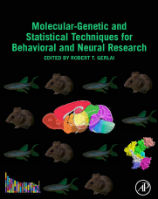
- Introducing relevant aspects of genomic research & neuroinformatics
- Describing numerous methods employed by the analysis of brain function and behavior
- Considering bioinformatics, genomic research, and molecular biology strategies for phenotypic analysis
- Discussion on both forward and reverse genetic approaches and genetic animal models of human diseases, and a section on ethical concerns arising from these methods and their applications
For more details on the book, launching June 1, 2018, please visit:
https://www.elsevier.com/books/molecular-genetic-and-statistical-techniques-for-behavioral-and-neural-research/gerlai/978-0-12-804078-2
Meeting Announcements
Parental Brain 2018 - Biological and Behavioral Perspectives in Parental Health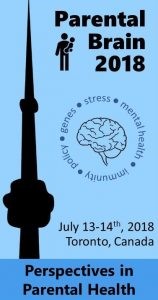
When: July 13-14, 2018
Where: Westin Harbour Castle Hotel, Toronto, Canada
What: International meeting of experts in the study of parenting, the parental brain and broad issues of parental, physical, and psychological health.
Symposia, keynote lectures, panel discussions, and trainee poster presentations. More details to come at http://parentalbrain2018.com/.
Meeting will be held as a satellite to the Joint International Congress of Neuroendocrinology (ICN) -- Society for Behavioral Neuroendocrinology (SBN) meeting (http://www.icn2018.org/).
Registration will be through the International Congress of Neuroendocrinology (ICN) website.
British Association for Psychopharmacology (BAP)
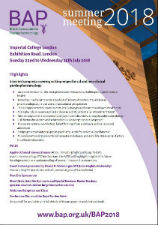
When: July 22-25, 2018
Where: Imperial College, London, UK
What: BAP promotes research and education in psychopharmacology and related areas, and brings people together in academia, health services, and industry. Formed in 1974, it is the largest such national association in Europe, and the second largest in the world.
For more details, please visit http://www.bap.org.uk/BAP2018.
American Psychological Association (APA) Division 6: Society for Behavioral Neuroscience and Comparative Psychology (SBNCP)
When: August 9-12, 2018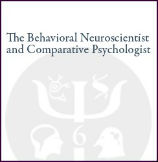
Where: San Francisco, California, USA
What: One of the most important functions of SBNCP is to acknowledge individuals who have made significant contributions to the advancement of our field through their scholarship and service.
SBNCP calls for nominations for awards to be given at the 2018 annual meeting of the American Psychological Association. Information on these awards can be found at http://www.apadivisions.org/division-6/awards/index.aspx.
The deadline for nominations will be Fridays, January 12, 2018. Each nomination should consist of the candidate's CV and a letter detailing the basis for the nomination.
Nominations should be submitted electronically to George F. Michel at [email protected], Chair, 2017 Awards Committee.
Do you have an interesting hobby or member news to share?
Let us know at [email protected]
|